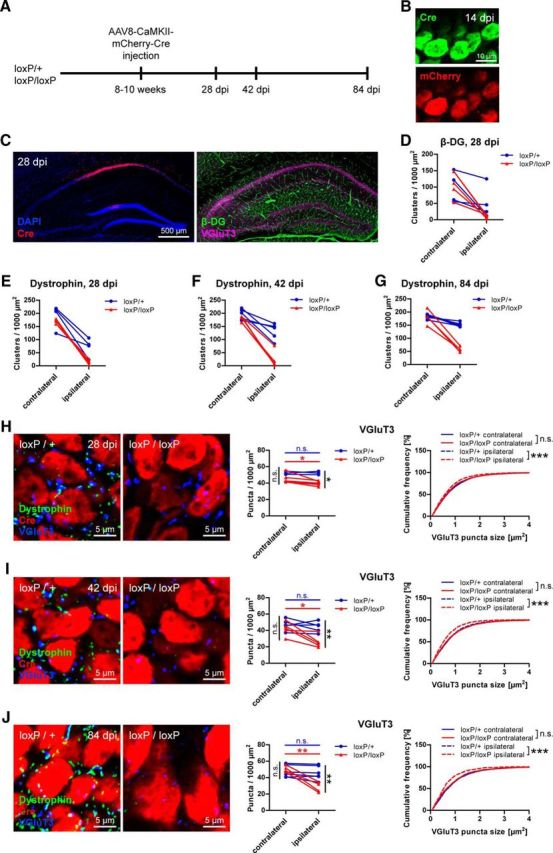Figure 8.

Maintenance of CCK-positive basket terminals requires dystroglycan. A, Overview of experimental design. Virus was stereotactically injected unilaterally into CA1 region in adult mice heterozygous or homozygous for loxP sites flanking the Dag1 gene. B, After 14 dpi, Cre recombinase immunolabeling and mCherry fluorescence were clearly visible in pyramidal cell somata. C, Example of the injection site at 28 dpi. Cre expression was mostly restricted to the CA1 pyramidal cell layer. VGluT3 and dystrophin or DG immunofluorescence was analyzed in the same sections. D, In mice containing homozygously floxed Dag1, β-DG immunostaining was markedly reduced in CA1 pyramidal layer at 28 dpi. Heterozygous mice showed a moderate reduction in β-DG immunofluorescence. E–G, As observed for β-DG, Cre expression led to loss of dystrophin in homozygously floxed mice, whereas only a slight decrease was observed in heterozygous mice. Reduction of dystrophin labeling was similar at 28 dpi (E), 42 dpi (F), and 84 dpi (G). H–J, Representative example images and quantifications of VGluT3 immunostaining in CA1 pyramidal layer at 28 dpi (H), 42 dpi (I), and 84 dpi (J). Ipsilateral VGluT3 size and density in homozygously floxed mice were significantly reduced compared with both contralateral side and ipsilateral side of heterozygously floxed mice. With increased time after injection, this reduction of VGluT3 puncta became more prominent. Data points represent individual mice (for statistical tests, see Table 3). *p < 0.05. **p < 0.01. ***p < 0.001.
